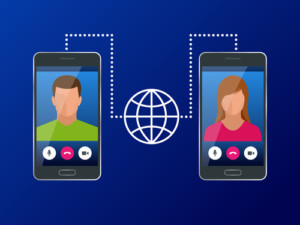{3:48 minutes to read} With the increased use of Skype, Facetime, Zoom, and many other tele-conferencing platforms, where people can see each other while having a conversation, the request for long-distance mediation has also grown.
While it is preferable that all parties be in the same room during the divorce mediation process, there are situations where one or more remote sessions may need to take place if:
- One party moved away for personal or professional reasons before the mediation process started or was completed, and traveling back for upcoming sessions may not be feasible.
- One party is traveling for business much of the time, or is temporarily away, and the parties agree that they want to move the process along.
- One party moves away once the mediation process is over, but some of the issues need revision, or new issues have come up that need to be ironed out.
For some people, there are advantages to mediating long distance:
- Parties are having a lot of difficulty being in the same space, thus increasing the tension in the room to the point that nothing can be accomplished. Being in separate spaces can help relieve the tension and allow the process to move forward.
- The parties opted to separate before engaging in the process, and one spouse moved out of town. The separation has had the positive effect of releasing much of the tension that the parties experienced while living under the same roof, and they are now in a better place to have a conversation.
There are also some disadvantages to long-distance mediation:
- It is much more difficult for some parties to remain focused for the duration of the session. They may have their attention pulled in other directions within the space they are in, receive a call on another phone, or just have the impulse to get up and walk around.
- Neither the parties nor the mediator can see the body language of the people in the room. Body language can often add a whole other dimension to the spoken words.
- When parties get impatient with one another, it is much easier to step away, leaving the other party in the lurch.
- Not having both parties in the same space makes it much harder to get them back on track.
- For the mediator, having all parties in separate spaces is much more challenging, and that becomes a real disadvantage to the parties.
Over time, I have had many couples who have requested teleconferencing for a variety of reasons and have successfully overcome the challenges.
An occasional three-way conference call may very well be extremely useful between in-person meetings to keep the momentum going; or in a case where one party is away and not able to commit to a return date.
If you, or someone you know, have been hesitating about making arrangements for a divorce mediation because you don’t believe this process can work unless both parties are in the same space — call me so that we can discuss how teleconferencing might work for you.
Jennifer Safian
divorce and family mediation
upper east side of manhattan (nyc)
new york, ny
(917) 881 5206
jpsafian@gmail.com
Latest posts by Jennifer Safian (see all)
- misinterpreting your partner’s demeanor may lead to conflict - October 9, 2024
- demystifying the money talk - September 11, 2024
- why are we afraid to discuss money? - August 21, 2024






Leave A Comment